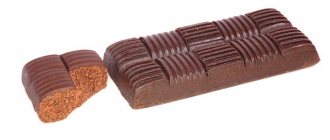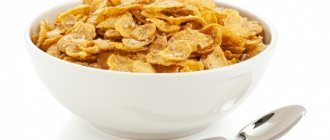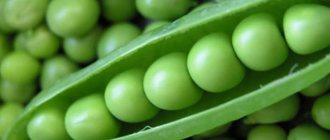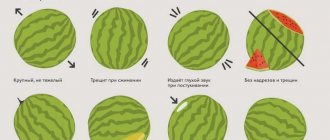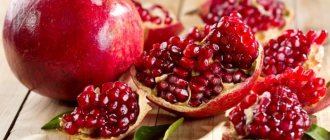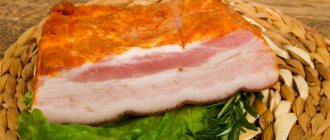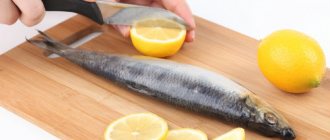Can a nursing mother eat lard?
Natural feeding requires limiting spicy, smoked, salty, and fatty foods in the menu. When deciding whether lard is suitable for a nursing mother, it is recommended to consult a pediatrician, since a baby may have special contraindications. In the absence of such, it is permissible to consume in small quantities after the child reaches a certain age. During lactation, a high concentration of saturated fats can cause digestive upset in a woman and baby.
On a note! Fresh lard should be excluded from the diet during breastfeeding. Treatment with salt or high temperature is detrimental to pathogens and helminth larvae and is therefore necessary to ensure product safety.
The decision to consume lard during breastfeeding should be made only after consultation with a doctor.
Salted or smoked?
During the period of natural feeding, it is permissible to add a little salted lard, prepared by dry method or cooking, to the diet. In addition to fat, smoked meats contain a large amount of extractive substances that can cause gastrointestinal problems and an allergic reaction in the baby. It is recommended to avoid such foods during lactation to prevent colic and flatulence. When the baby grows up and begins to eat mainly complementary foods, it is permissible in rare cases to eat a small piece if the mother really wants it.
On a note! There should be no meat layers in the lard, since they are often a source of human infection with various bacteria, which is especially dangerous during breastfeeding.
Ban on eating lard in the first six months of a child’s life
Breastfeeding women should abstain from the product until the baby is 6-7 months old. This is explained by the fact that the child’s body is not ready for heavy food; the digestive system continues to develop. The absence of many enzymes and beneficial microflora in the intestines complicates the process of digesting food.
Dense, refractory fats during breastfeeding are difficult for the body of a nursing woman to digest, not to mention the baby. Premature or excessive intake of them with food causes nausea, regurgitation, and abdominal pain. Poor nutrition is a common cause of gastrointestinal diseases in the future.
The benefits of lard for a nursing mother
- For example, arachidonic acid. This substance is simply necessary for the body to normalize cholesterol metabolism, as well as hormonal activity.
- At the same time, the product allows you to bind radionuclides and remove toxins from the body.
- Lard is often used to fight cancer, since almost any carcinogens dissolve in it.
If you evaluate all the advantages and disadvantages of this product, then with a certain degree of confidence we can say: lard can be eaten in limited quantities even by nursing mothers. In addition, this product will not harm a woman’s exhausted body.
Indeed, in addition to these components, lard also contains vitamins E, D and A, which helps maintain tone and the immune system.
Product benefits
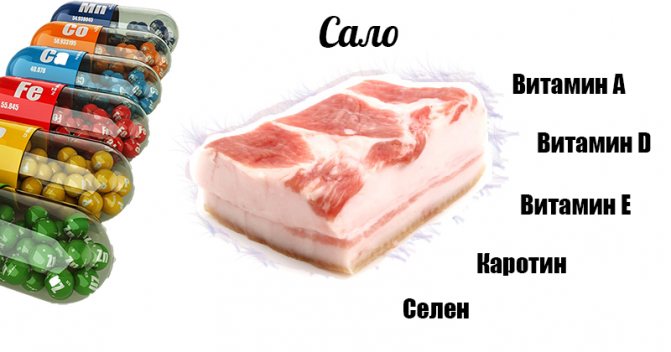
Lard during breastfeeding is considered undesirable in the diet of a nursing woman, but in small quantities it is beneficial, having many positive properties. The product contains fat-soluble vitamins A, D, E, K, macroelements (potassium, calcium, phosphorus, chlorine), microelements (iodine, iron, copper), fatty acids, including polyunsaturated ones, necessary for the normal functioning of the body.
Beneficial properties of pork lard:
- prevention of cardiovascular diseases;
- strengthening the immune system and circulatory system;
- improvement of intestinal function;
- cleansing of waste and toxins;
- beneficial effect on joints;
- reducing irritability, combating stress;
- strengthening memory, concentration, visual acuity;
- elimination of dry skin, brittle hair and nails.
On a note! Lard contains beneficial cholesterol, which forms cell membranes, necessary for the prevention of atherosclerosis, promoting muscle growth and the production of hormones.
Composition and benefits of lard during breastfeeding
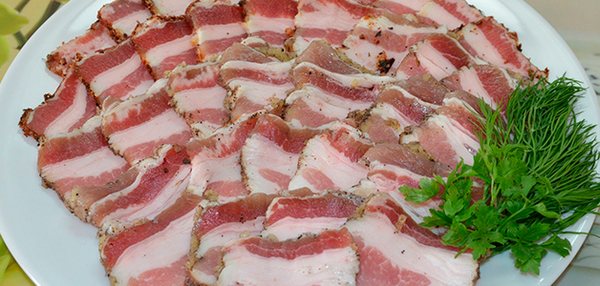
Lard has a number of beneficial properties
Nutritionists and pediatricians pay great attention to lard, because despite its apparent harmfulness and high calorie content (724–902 kcal per 100 grams), it contains useful micro- and macroelements, such as iron, zinc, copper, phosphorus, selenium and manganese, which have a beneficial effect on the body. Lard also contains vitamins A, D, E and F. It is also rich in fatty acids - stearic, linoleic, palmitic, oleic, arachidonic (0.5%).
Energy value of lard (approximate ratio per 100 grams of product)
- Proteins - 2.4 g.
- Fats - 89.0 g.
- Carbohydrates - 0.0 g.
Beneficial properties of pork lard
- The vitamins contained in lard have a positive effect on the skin and hair, increase visual acuity, strengthen the immune system, and normalize hormonal levels.
- Lecithin contained in pork fat strengthens blood vessels.
- Lard has much less cholesterol than butter, and its bioactivity is 5–6 times higher.
- This product melts at a temperature of 37°C, which is close to the temperature of the human body and satiation from it occurs faster, after just a few pieces.
- Equally important is the content of arachidonic acid in lard, which can dissolve carcinogens and remove toxins from the body, preventing the development of cancerous tumors. Among other things, this polyunsaturated fatty acid is part of the building blocks of the membranes of the brain and retina. A nursing mother passes arachidonic acid to her baby through breast milk, thereby ensuring the protection of the small organism from the effects of harmful substances and the full development of its nervous system.
The increased need for arachidonic and docosahexaenoic acids in children of the first year of life is due to the rapid growth of the brain, the weight of which increases 3 times in the first year of life. Maternal breast milk, along with essential fatty acids - linoleic and linolenic, also contains arachidonic and docosahexaenoic acids in amounts of 0.3–0.6% and 0.1–1.4%, respectively.
Horse I.Ya. and etc.; Handbook of Functional Gastroenterology
https://www.gastroscan.ru/handbook/396/8599
How to choose the right lard
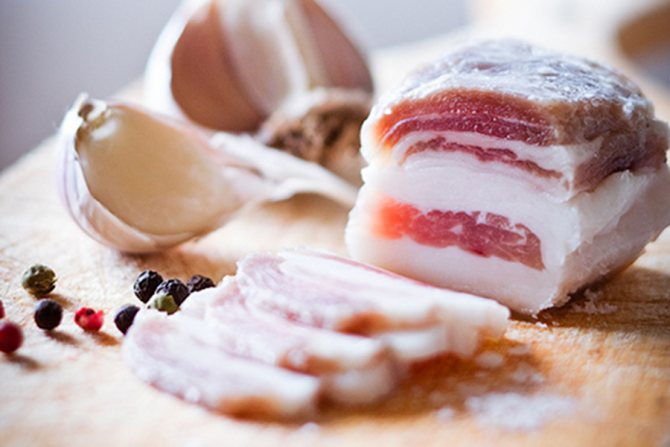
The taste and softness of prepared lard directly depends on the correct choice of fresh product.
When purchasing this Ukrainian delicacy in a store or market, you should make sure not only of the freshness of the product, but also ask the seller if all the necessary sanitary documents are available. Fresh lard is always white or with a slight pinkish tint, and has no smell of urea or other foreign odors. If a clear reddish tint or vascular veins are noticeable, then you should refuse to purchase such a product. Blood could get into the lard for a number of reasons; in any case, the taste will be far from ideal. If the product has a yellow or gray tint, most likely it is not fresh and a nursing mother should definitely not consume such a delicacy. The skin should be without bristles, but its color can be anything from white or light yellow to brown. The principle also applies - the thinner the skin, the softer the fat. As for the thickness of the pieces, you should give preference to layers of the product 3–6 centimeters thick.
It is advisable to try to pierce the lard; usually sellers have special knives or forks for this. Fresh product is pierced easily, with little resistance. When purchasing this delicacy for a nursing mother, you should not give up the opportunity to taste a small piece; it should be easy to chew, literally melt in your mouth.
In order for the lard to be tasty and tender after cooking, you need to pay attention to which part of the pig it is purchased from . For a nursing mother, it is better to choose pieces from the back or side, they are best suited for salting, they will be more tender and soft, belly fat is also suitable, although when salted it may be a little tougher, but it has streaks of meat, which will give a special taste to the delicacy.
Side effects and contraindications
The main harm lies in the high fat content and high calorie content - 900 kcal per 100 g of product. Low-quality products can cause harm during breastfeeding. Rancid old fats are poisonous and may also contain heavy metal salts. Animals fed antibiotics accumulate these substances in their subcutaneous fat.
When expanding your diet with this product, you need to monitor your child’s reaction. Side effects may include indigestion, colic, flatulence, causeless crying, sleep disturbances, rashes, and breast refusal. At the slightest sign of intolerance, remove the product from the menu for at least 1 month.
Eating lard while breastfeeding is prohibited if:
- individual intolerance;
- acute form of diseases of the gastrointestinal tract, liver and kidneys;
- overweight;
- diabetes mellitus;
- disorders of cholesterol metabolism.

Lard may not always be beneficial for the body.
How to eat lard while breastfeeding?
Introduction to the diet is carried out similarly to other dishes. You are allowed to try a small piece for the first time 6-7 months after birth. In this case, complementary feeding should be taken into account and no other new components should be added. If there are no side effects, gradually increase the dose. It is important to consume lard correctly when breastfeeding, adding it to the diet 3-4 times a week. You are allowed to eat no more than 30 g of product per day. It is necessary to observe the drinking regime. Eat with bread without subjecting it to additional heat treatment. If there are meat layers, they should be cut out.
How to choose?
Normal tolerance of the new ingredient in the mother's diet by the baby will be ensured by the consumption of quality products. It is advisable to make sure that there is a certificate of conformity and veterinary stamps before purchasing. Fresh lard is white in color with a slight pink tint. A grayish or yellowish color indicates expired products. The structure should be uniform and dense.
You cannot buy a product with a lot of spices. When breastfeeding, only lard and salt are allowed; it is advisable to exclude even garlic from the recipe. If you can’t purchase quality products, you can cook it yourself from a fresh piece.
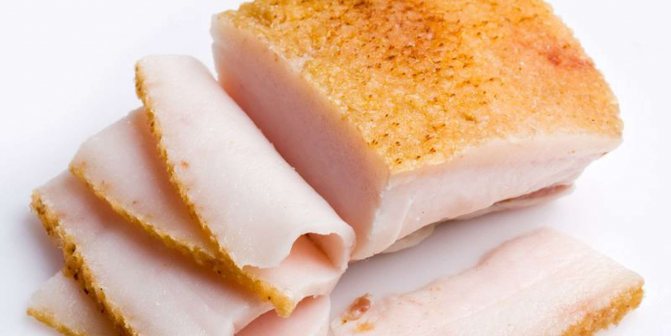
How to choose lard allowed during breastfeeding
When choosing this delicacy for a nursing woman’s table, several factors need to be taken into account:
We recommend reading: What not to eat while breastfeeding
- Store-bought lard should be eaten with great caution, as it may contain food “chemicals” and preservatives that will definitely harm the baby. It is best not to buy such products in stores at all.
- The ideal option is to purchase fresh lard and salt it yourself at home.
- It’s good to ask the seller for documents on the products before purchasing. The papers must have a stamp indicating that the product has been checked by a veterinary service.
- Fresh lard has a white-pink color and a milky, sweetish aroma.
- If the delicacy is gray in color or has a suspicious musty smell, then you cannot take it; most likely, it is stale.
- A quality product may feel slightly damp to the touch, but not slippery.
- The most delicious lard is located on the belly of the pig. Before purchasing, it is better to ask the seller which part of the carcass the product was cut from.
- You need to pay attention to the skin. It should be smooth, soft, uniform in color, without blood stains or stubble residue.
- A nursing mother can only eat regular salted lard without spices and garlic.
- The smoked variety of the product is strictly prohibited during breastfeeding!
Homemade Recipes
A quality product is easy to prepare yourself. The main ingredients are lard and coarse rock salt. It is advisable to exclude spices and herbs, since intolerance in infants is often caused by them. During natural feeding, dry and brine methods and cooking are suitable for preparing lard. Smoking is undesirable, since the resins will negatively affect the quality of breast milk. At home, it is recommended to cook in small portions so that you always have a fresh snack.
Quick dry salting
Ingredients
- lard – 1 kg;
- coarse rock salt – 0.2 kg.
Cooking method
Rinse the main ingredient with cold running water and make several cuts. Pour a layer of salt onto the bottom of an enamel pan, add generously sprinkled and grated lard. Cover with a lid and place in the refrigerator for 3 days. The shelf life of the finished snack is 3-4 weeks.
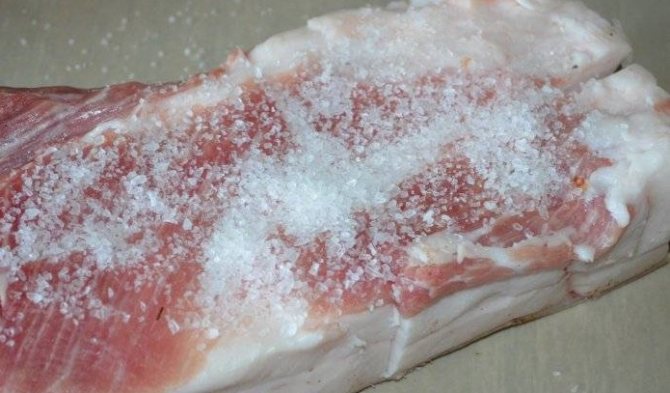
Lard in brine
Ingredients
- lard – 1 kg;
- coarse salt – 0.5 tbsp;
- bay leaf – 4 pcs.;
- black peppercorns – when breastfeeding it is advisable not to add or in small quantities;
- water – 2.5 tbsp.
Cooking method
Boil water, dissolve salt, cool. Cut the main product into cubes, put it in a glass jar, add spices. Pour in the brine and cover loosely with the lid. Place the container in a cool place for 2-3 days, then transfer it to the refrigerator. After 1-2 weeks it is permissible to eat. Remove the finished product from the brine, dry with a towel, wrap in foil or paper, and put in the freezer. It can be stored for 3-4 months.
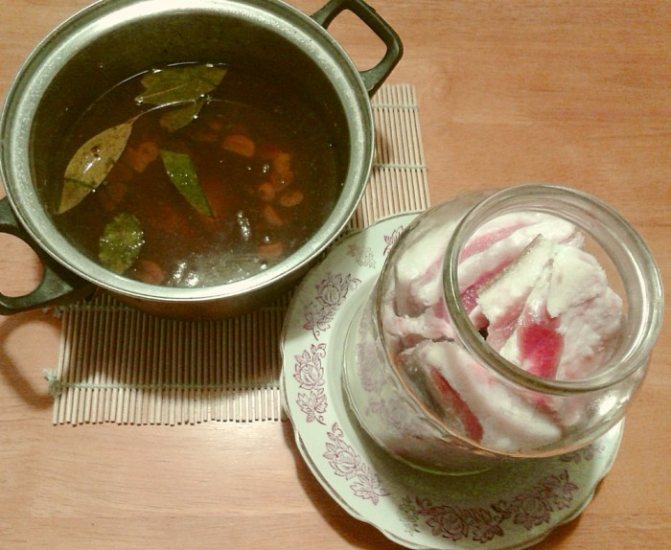
Hot salting or cooking
Ingredients
- lard – 1.5 kg;
- coarse salt - approximately 0.5 kg;
- water - depending on the size of the pan;
- bay leaf, black peppercorns - optional.
Cooking method
Wash the main ingredient, cut into pieces about 10 cm in size. Pour water into a saucepan, add 100 g of salt for every 1 liter, boil, add spices. Load the pieces, completely covering them with brine. Cook over low heat for 40-60 minutes. Free from liquid, dry, wrap in parchment paper, insulate with a towel, and leave until completely cool. Unwrap and put in the refrigerator.
During the period of natural feeding, lard is allowed to be administered to a nursing mother in small quantities 6-7 months after birth. It is important to monitor the baby’s well-being. Eat only salty, high-quality products. Store in the refrigerator or freezer.
Is it possible to lard while breastfeeding - pork for a nursing mother with recipes
Breastfeeding imposes certain restrictions on the diet of a young mother.
Caring for the health of her beloved baby, she carefully selects foods for her diet. But this task is often complicated by a psychological factor: after all, the forbidden certainly attracts, especially since before giving birth the woman probably had some favorite dishes.
In this regard, many mothers are interested in whether it is possible to consume lard during lactation.
Dietary restrictions for a nursing mother: truth and fiction
In order for the conversation to be substantive, let’s decide right away. The healthy development of an infant depends very little on what exactly the nurse eats . The emotional state of his mother is much more important for the well-being of the child.
It is worth agreeing with Dr. Komarovsky, who believes that if a woman, choking on thin porridge and a leaf of lettuce, watches with melancholy and slight hatred as her family devolves barbecue pork ribs, these negative feelings will certainly be passed on to the baby and make him unhappy.
Motherhood is not a disability, not an illness, and not a reason for self-sacrifice. A nursing mother can eat almost anything, just the food must be fresh and of high quality.
If we talk about pork, there is nothing in it that, while completely safe for the body of an adult, could, if passed into breast milk, have a negative impact on the health of the baby. Another thing is that this meat has some features that you need to know in order to avoid possible problems. That's what we'll talk about.
Lard in the diet of a breastfeeding woman
Women who are measles often wonder if it is possible to eat lard during the lactation period. Due to the content of “bad” cholesterol, pediatricians do not recommend introducing fatty foods into the diet. If consumed, it may negatively affect the condition of the newborn. A healthy appearance of the child and stable functioning of the intestines are criteria that allow the use of lard during breastfeeding.
Benefit
Lard is a high-calorie product that gives you a feeling of fullness. But the main argument in favor of animal fat is the content of fat-soluble vitamins A, E, D. Tocopherol (vitamin E) is involved in regulating hormonal levels, cholesterol levels, and strengthening blood vessels.
The next important point: the sebaceous product cleanses the body of toxic compounds and carcinogens, and prevents the formation of tumors. Polyunsaturated arachidonic acid contained in lard affects the functioning of the brain, heart, kidneys, improves blood composition and promotes the removal of cholesterol plaques.
Vitamin D, contained in lard, is also an important element for the development of a baby. A lack of vitamin D causes a child to develop rickets. Newborns often suffer from this disease.
Vitamin D is produced in children's bodies in the presence of sun.
With food, this element comes through breast milk if the mother’s diet includes fish and fish oil, oatmeal, potatoes, lard, butter and vegetable oil.
Lard has a sufficient range of useful substances that are important for mother and child.
Ingredients: 100 gr. a piece of lard contains about 90 grams. fat, 70-100 mg cholesterol, 39 mg unsaturated fatty acids, calorie content - 770 kcal. Experts recommend carefully assessing the beneficial and harmful properties of lard. Take a balanced approach to the issue of including this product in the diet during breastfeeding and not harm the little creature.
Subscribe to “Baby Feeding” on !
Rules of use
- According to the recommendation of pediatricians, a mother can introduce a fatty product into her diet from the age of 6 months.
- Test for allergies: eat 10-15 grams. lard, wait for the child’s intestines to react. Watch your baby's skin for the next couple of days. If a negative reaction occurs, stop administering the product for 2-3 months.
- If the test passed without consequences, you can enjoy a small piece of salty lard once every 2 days.
- For a young mother, it is acceptable to eat salted lard without spices or smoking.
- Use home-salted lard for food.
- Buy lard from country pigs, it is more tender and flavorful. Use a sense of proportion, as a fatty product is more difficult to digest.
- When salting lard for a nursing woman, do not use spices, use only salt.
Negative points
In terms of composition, pork is a fatty meat. A large percentage of the fat layer is a source of high and low density lipoproteins. Excessive intake of cholesterol provokes the development of heart disease.
Significant calorie and fat content limits the use of meat in the diet of a young mother.
Digesting protein foods puts stress on the kidneys and liver. People with gastrointestinal and kidney problems should limit the use of pork in their diet.
Excess meat food causes digestive difficulties not only for the nursing mother, but also for the baby (stool disorders and increased gas production). Particular attention should be paid to the quality of the product. Low grade meat can cause infection in the body of mother and baby. Purchasing a high-quality meat product will affect the usefulness and safety of the prepared dishes.
Nuances of choosing lard for a nursing mother
The choice of lard for a woman during lactation must be approached responsibly. What to pay attention to:
- the meat product must bear the stamp of the veterinary service;
- It is advisable to buy a homemade product from a trusted seller;
- lard color: it should be pale pink. A yellow or gray tint is a sign of a stale product;
- high-quality lard emits a delicate, sweet-milky aroma;
- the optimal thickness of the piece is 2–3 centimeters, it is better to choose it from the abdominal part (the lard will be softer and tastier);
- good lard is moist to the touch, but not slippery;
- the skin should be soft and smooth;
- lard tastes better than boar lard.
Fresh lard should be pale pink in color.
Homemade lard recipes for nursing mothers
Using proven recipes, you can prepare tasty and healthy lard for a nursing mother at home. Among the many methods, three main ones can be distinguished.
Quick dry salting
It is very simple and quick to prepare lard using the dry method.
- Cut the lard into pieces, grate generously with salt (you can add just a little ground black pepper for flavor).
- Place the product in a bag and refrigerate for about 12 hours.
- After the specified time, place the lard in the freezer for a couple of days: due to this, it will become even softer. This delicacy can be stored for up to one month.
Lard in brine
If you cook lard in brine, it will taste tender. This cooking method requires the use of spices.
- Boil 1 liter of water, add salt (about 1 glass, since lard will not absorb excess salt), stir until completely dissolved.
- Add a couple of bay leaves and a few black peppercorns to the brine.
- Wait for the liquid to cool to 30–35 degrees.
- Cut 800 g of lard into pieces (on average 10x10 cm), put in a jar and fill with cooled brine.
- Place the jar in the refrigerator for three days, turning the slices every 12 hours for better salting.
- After three days, wash the pieces with running water and place them in the freezer; you can store them there for several months.
Hot salting or cooking
This method is the safest, since such heat treatment reduces the risk of poisoning to zero, eliminating all potentially harmful substances.
- Cut the lard into layers approximately 4 centimeters thick.
- Immerse the pieces in boiling water (for a pleasant golden hue of the finished product, you can add a little onion peel; this will not affect the taste and composition of the lard).
- Add salt to taste and simmer for about 15 minutes, while the water should cover the slices entirely.
- Remove the lard, rub it with salt and cool. Such a boiled product, packaged in food paper, can be stored in the refrigerator for several months (it is usually not placed in the freezer).
For a nursing mother, it is better to prepare lard in small quantities and not to stretch out its use for a long time.
Photo gallery: ways to salt lard at home
Of course, lard is included in the list of foods undesirable for breastfeeding, primarily due to the presence of indigestible fatty acids. However, it also brings many benefits to the body.
Therefore, when the baby is six months old, a woman can carefully include this food in her diet, choosing only fresh product and using homemade recipes.
In this case, it is necessary to observe moderation and carefully monitor the child’s condition.
Selection and storage
During breastfeeding, mothers should carefully choose a product to provide their baby with complete and high-quality nutrition. For such purposes, meat that has not been frozen is suitable.
When buying pork, pay attention to its appearance: color – from pink to slightly reddish; the structure is dense, elastic, and when pressed it returns to its original state.
The defrosted product has a watery structure, friability, and uneven color.
A dark shade, the presence of notes of foreign odor, lack of elasticity are signs of a low-quality product.
A young mother during the lactation period needs tasty and healthy food. When choosing pork, consider the following:
- the most tender part is the tenderloin (suitable for any dish);
- coarser meat of the shoulder part (broth, stewing);
- a piece with layers of fat (the smaller the fat layer, the better) refers to brisket (for baking).
The nutritional value of the product depends on storage conditions. You can leave the meat in the refrigerator for 1.5 days if you plan to cook it in the near future. For long-term storage, but not longer than 4 months, you should use freezing of semi-finished products.
Before freezing meat, dry clean it. For a two-day storage period, use a container with a lid that allows air to pass through. Before storing in the freezer, divide the meat into portions. Pack each part in individual food grade polyethylene.
The tenderloin is the leanest and most tender part of the pork carcass.
How to salt lard at home
Salting can be carried out using a quick dry method, in which the product will be ready in two to three weeks, but it can be stored for up to one month. The wet method involves salting in brine.
It is more labor-intensive, but provides storage of lard for a year. Hot salting or cooking removes harmful substances from the product due to heat treatment.
This reduces the risk of poisoning and infection with dangerous infections that animal meat often contains.
Boiling is the safest method of pickling while breastfeeding. First, the lard is cut into layers 3-4 centimeters thick. The pieces are dipped into boiling water with onion skins.
The husk will give the product a pleasant golden hue, but will not affect the taste or composition of the product. Add salt to taste to the water and cook for about 15 minutes. Please note that when cooking, the water should completely cover the pieces.
Rub the lard with salt and pepper and put it in the refrigerator until completely cooled. This product is stored for about 6 months.
A faster salting recipe involves cutting the lard into pieces, rubbing it with salt and pepper, putting it in a bag and leaving it at room temperature for 12 hours.
Afterwards, you need to put the dish in the freezer for two days. This lard can only be eaten for the first three to four weeks after preparation.
Often the pieces are rubbed with grated garlic, but it is not recommended to eat garlic while breastfeeding.
data-matched-content-rows-num=”9, 3″ data-matched-content-columns-num=”1, 2″ data-matched-content-ui-type=”image_stacked”
Meat menu for a young mother (recipes)
Nutritionists and chefs have created a huge variety of meat first and second courses that are suitable for mothers during lactation. Vegetable soups with meat broths, stews, stewed or baked meats, soufflés and steamed cutlets. One thing to keep in mind is to beware of rich broths. When preparing soup, drain the first flock of meat, add clean water and continue cooking.
For dressings and sauces, use sour cream, natural yogurt, vegetable oil and lemon juice. It is better to avoid soy sauce or use it very carefully. Try some of the food recipes below.
Liver in sour cream sauce
- 400 gr. pork liver;
- 1 onion;
- 1 clove of garlic;
- 1 tbsp. sour cream;
- 1 person flour;
- 0.5 tbsp. milk;
- salt - to taste;
- greenery;
- sunflower oil.
Wash the liver, brush with lemon juice to remove the film. Liver, cut into portions, soak in milk to soften.
Let stand for about an hour, squeeze and simmer in a saucepan in sunflower oil with onions for about 10 minutes.
Mix sour cream with flour, add to the liver and boil for 20 minutes. At the end of cooking, add herbs if desired and add salt to taste. If the product is tough, extend the cooking time by 10 minutes by adding a little water. The dish will be served as a side dish with pasta, rice, and buckwheat.
Braised pork
- 300 gr. pork tenderloin;
- 200 gr. sour cream;
- 1 onion;
- dill greens.
Cut the pork into pieces, add water and cook for about 1 hour. Next, add sour cream and simmer for half an hour. 10 minutes before the end of cooking, add chopped onion and salt. If desired, use greens. Bon appetit.
Source: //101allergia.net/dlya-mam/laktatsiya/salo-v-racione-kormyaschey-mamy-a.html
